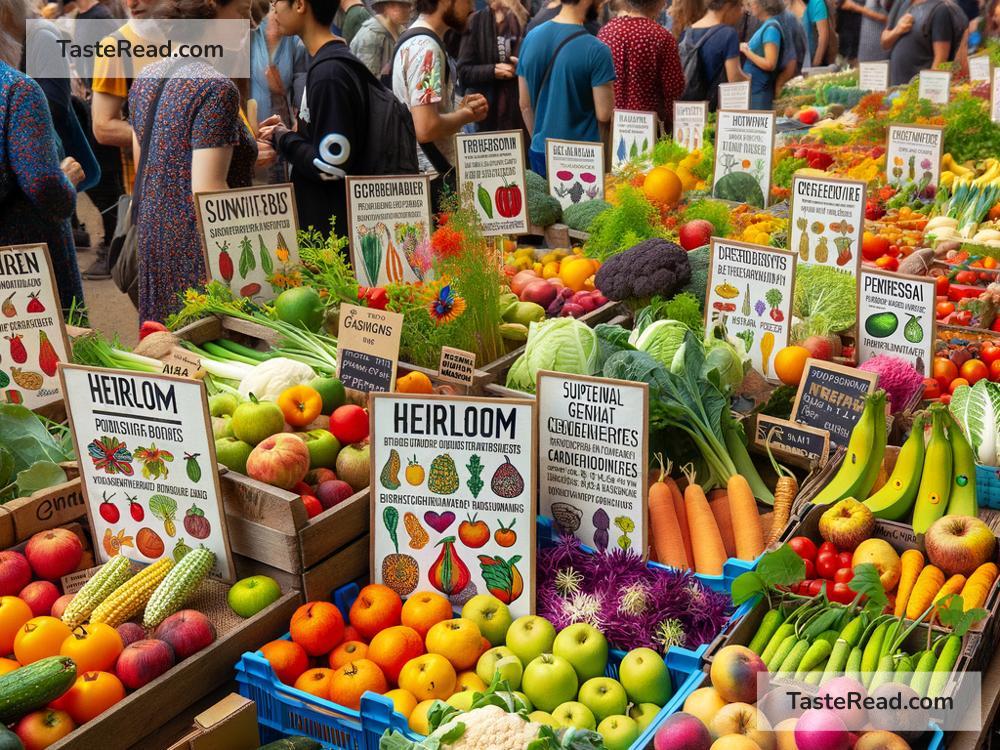The Future of Food and Genetic Diversity
Food is an essential part of life. It nourishes us, brings people together, and shapes our cultures. As the world’s population grows and climate change alters the planet, scientists, farmers, and policymakers are asking one important question: what will the future of food look like? One of the key answers lies in genetic diversity, a concept that is gaining more attention as we search for sustainable solutions to feed the world.
What Is Genetic Diversity?
Genetic diversity refers to the variety of genes in plants, animals, and microorganisms. It’s what makes each species unique. For example, think about apples — there are thousands of different varieties, from sweet Fuji apples to tangy Granny Smith ones. This diversity provides options for farmers to grow apples that thrive in different conditions, resist diseases, or meet consumers’ tastes.
Genetic diversity isn’t just about tasty fruit; it’s critical for food security. When crops have a wide range of genetic traits, they are more likely to survive challenges like droughts, floods, pests, and diseases. Without genetic diversity, entire crops can fail, leading to food shortages and hunger.
The Problem: Shrinking Genetic Diversity
Over the last century, modern farming practices have prioritized efficiency and high yields. While this approach has allowed us to feed a growing population, it has also led to the loss of genetic diversity. Farmers often rely on a small number of crop types, such as wheat, rice, and corn, which dominate global agriculture. These crops are bred for high productivity, but this focus on “monocultures” (planting large areas with a single crop variety) has a downside.
Monocultures are vulnerable. If a disease or pest attacks one variety, it can wipe out entire fields because all the plants are genetically similar. This happened with the Irish potato famine in the mid-1800s. Farmers relied heavily on one type of potato, and when a disease struck, millions of people were left without food.
Today, scientists warn that we are making the same mistake on a larger scale. Many ancient crops, known as “heritage” or “heirloom” varieties, have disappeared over time. Farmers now grow fewer types of plants, reducing the genetic diversity needed to protect our food system.
The Future of Food: Bringing Back Diversity
The good news is that many organizations and researchers are working to preserve and expand genetic diversity in agriculture. The future of food may depend on their efforts. Here are some exciting developments:
1. Seed Banks
Seed banks are like libraries for seeds. They store thousands of plant varieties for future use. One of the most famous seed banks is the Svalbard Global Seed Vault, located in a mountain on a remote island in Norway. It holds more than one million seed samples from around the world to ensure genetic diversity is preserved, even in the face of natural disasters, climate change, or human conflict.
2. Reviving Forgotten Crops
Scientists and farmers are rediscovering “forgotten” crops that were once staples in different regions. For instance, millet, quinoa, and sorghum are being promoted as alternatives to wheat and rice. These crops are often more resilient to drought and pests, making them important in a changing climate.
3. Genetic Engineering
Advances in technology, such as genetic engineering and gene editing, are giving us new tools to create crops. Scientists can now modify plants to withstand harsher growing conditions or resist diseases. For example, researchers have developed rice varieties that grow well in salty soil, a condition that is becoming more common due to rising sea levels.
4. Supporting Local Farmers
Small-scale farmers play a key role in maintaining genetic diversity. Many grow heirloom or indigenous crops, which have unique traits adapted to local environments. Supporting these farmers and learning from their traditional farming methods can help create a food system that prioritizes diversity and sustainability.
5. Alternative Proteins
The future of food also includes innovation in proteins, such as lab-grown meat, insect-based snacks, and plant-based alternatives. These protein sources require fewer resources to produce and may play a role in reducing pressure on monocultural farming practices.
Why Genetic Diversity Matters for the Future
Preserving genetic diversity isn’t just about agriculture; it affects everyone. A diverse food system is more adaptable to changing conditions and helps prevent food shortages. It also provides us with healthier, more varied diets.
As climate change brings unpredictable weather and challenges, genetic diversity will be a critical tool to protect agriculture. For example, farmers may plant drought-resistant corn in areas with less rainfall or disease-resistant tomatoes in regions experiencing new pests. Genetic diversity allows us to prepare for these challenges instead of reacting to them after crops fail.
How You Can Help
You don’t need to be a scientist or farmer to support genetic diversity. Here’s what you can do:
- Eat a variety of foods: Choosing different fruits, vegetables, and grains encourages demand for diverse crops.
- Support local farms: Look for farmers’ markets or purchase heirloom varieties to help small-scale farmers preserve traditional plants.
- Learn about food systems: Educating yourself on the importance of genetic diversity helps raise awareness about the issue.
Conclusion
The future of food is intertwined with genetic diversity. By preserving the unique traits of plants, animals, and microorganisms, we can build a resilient food system that feeds everyone sustainably. Although modern agriculture and climate change have posed challenges, innovation, collaboration, and respect for nature’s diversity offer hope. As individuals and communities, we have the power to help shape a future where food is abundant, healthy, and secure for generations to come.


